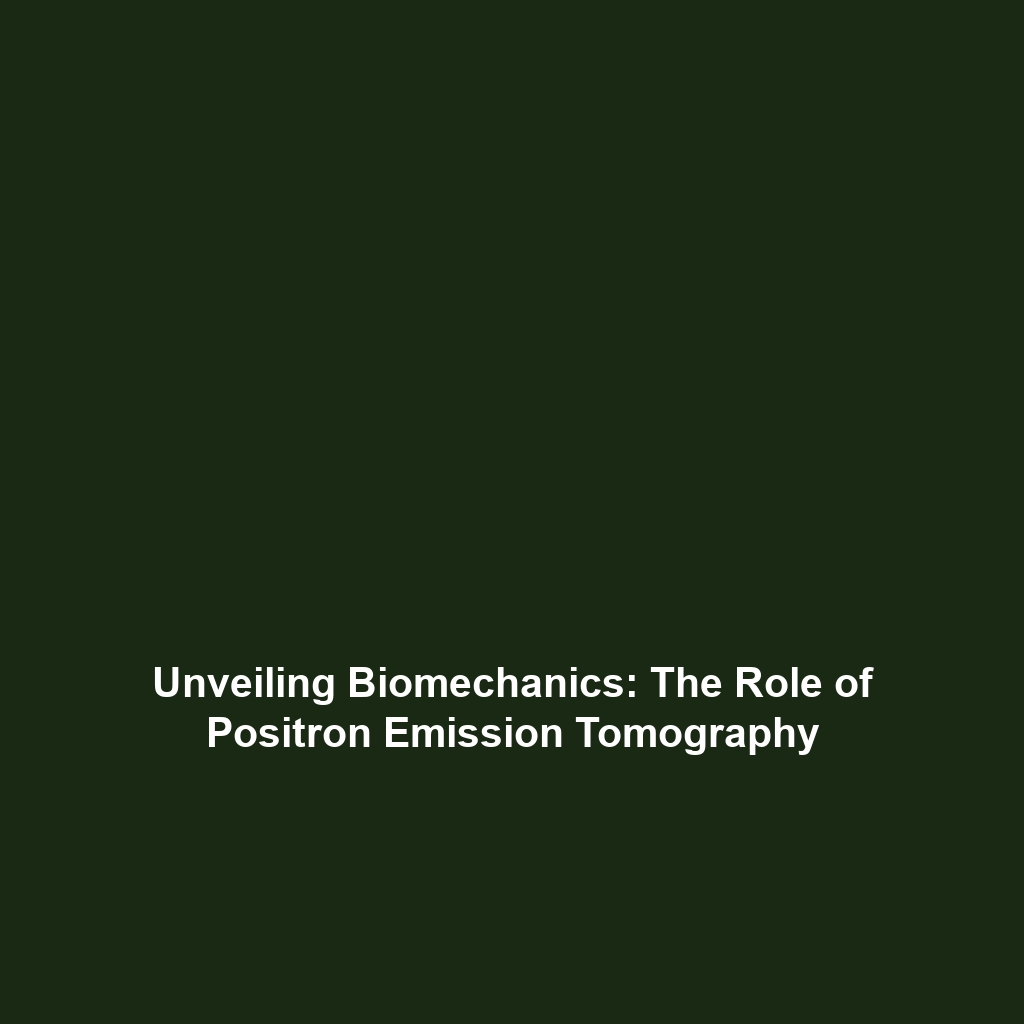PET Scans: Measuring Metabolic and Neurotransmitter Activity in the Brain
Introduction
Positron Emission Tomography (PET) scans are pivotal in contemporary neuroscience, allowing researchers to measure metabolic activity and neurotransmitter dynamics in the human brain. Utilizing radioactive tracers, PET scans generate detailed images that significantly advance our understanding of neurological disorders and cognitive functions. Within the realm of biomechanics, these scans provide crucial insights into how metabolic processes influence physical movements and overall body mechanics. This article delves into the science behind PET technology, its various applications, challenges, and future research in biomechanics.
Key Concepts
Understanding PET Scans
At the core of PET scans is the use of radioactive tracers, which emit positrons. When these positrons encounter electrons, they annihilate, resulting in gamma rays that can be detected by the PET scanner. This principle allows for the visualization of metabolic processes in the brain, reflecting neurotransmitter activity and overall brain health.
Relevance to Biomechanics
Biomechanics studies the mechanics of movement in biological systems. By measuring metabolic activity, PET scans help understand how energy consumption relates to muscle function and movement efficiency. This integration of neuroimaging and biomechanics allows for a deeper understanding of how neurological health influences physical performance.
Applications and Real-World Uses
PET scans have numerous applications in both clinical and research settings:
- Diagnosis of Neurological Disorders: PET scans are utilized in diagnosing conditions such as Alzheimer’s disease, Parkinson’s disease, and epilepsy by assessing metabolic changes in the brain.
- Research on Cognitive Function: In biomechanics research, PET can measure the metabolic cost of various motor tasks, shedding light on how cognitive processes affect physical performance.
- Pre-surgical Evaluation: PET imaging assists in planning surgeries for epilepsy or brain tumors by delineating functional areas of the brain and their metabolic states.
Current Challenges
While PET technology offers significant insights, it is not without challenges:
- High cost and limited availability of PET scanners in some regions.
- Radiation exposure associated with the use of radioactive tracers.
- Difficulty in interpreting data, particularly in complex cases of neurological disorders.
- Time constraints in patient availability for lengthy imaging sessions.
Future Research and Innovations
Future research in PET technology is geared towards minimizing radiation exposure and enhancing image resolution. Innovations in next-gen tracers may allow for more specific targeting of neurotransmitter systems, providing even deeper insights into their roles in movement and function. Additionally, combining PET with other imaging modalities like MRI could produce comprehensive profiles of brain activity, crucial for advancements in biomechanics research.
Conclusion
PET scans represent a transformative tool in the field of neuroscience, enabling the measurement of metabolic and neurotransmitter activity in the brain. Their significance in understanding biomechanics underlines the interconnectedness of physiological and physical processes. As technology evolves, further integration of PET scans in biomechanics promises to unveil new pathways for enhancing human movement and treating neurological disorders. For more insights on related topics, explore our articles on neuroimaging technologies and biomechanics research advancements.
